The kitchen is the heart of the home, and having the right lighting can make all the difference in creating a warm, inviting, and functional space. Whether you’re cooking a family meal, entertaining guests, or simply enjoying a quiet cup of coffee, good lighting can enhance your experience.
This article will explore the top 10 kitchen lighting options that can transform your kitchen into a bright and cheerful space.
1. Recessed Lighting
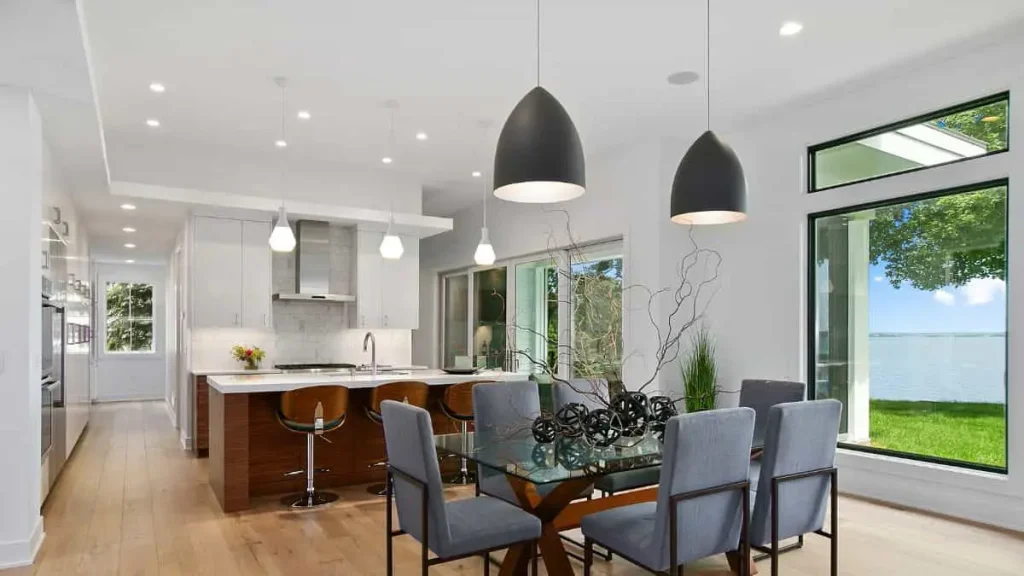
What is Recessed Lighting?
Recessed lighting, also known as can or pot lighting, is a sleek and modern lighting option that is installed into the ceiling. This type of lighting provides a clean, unobtrusive look while offering excellent illumination for various tasks.
Benefits of Recessed Lighting
Recessed lighting is ideal for kitchens because it offers focused, even lighting without cluttering the ceiling. It’s perfect for task lighting, especially over countertops and work areas. Plus, it can be used to highlight specific features in your kitchen, such as an island or a unique backsplash.
Ideal Placement for Recessed Lighting
To maximize the benefits of recessed lighting, it’s important to place the lights strategically. Aim to space them evenly across the ceiling, focusing on areas where you need the most light, such as above counters, sinks, and cooking areas. A general rule of thumb is to place them about 2-3 feet apart.
2. Pendant Lights

What are Pendant Lights?
Pendant lights are single light fixtures that hang from the ceiling, usually suspended by a cord, chain, or metal rod. They are available in various styles, sizes, and materials, making them a versatile choice for any kitchen design.
Different Styles of Pendant Lights
From industrial and rustic to modern and minimalist, pendant lights come in an array of styles. Glass pendants offer a sleek and contemporary look, while metal or wooden pendants can add a touch of rustic charm. You can even find pendant lights with unique shapes and colors to match your kitchen’s decor.
How to Choose the Right Pendant Lights
When selecting pendant lights, consider the size and layout of your kitchen. For smaller spaces, opt for smaller fixtures to avoid overwhelming the area. In larger kitchens, you can choose bigger or multiple pendants to create a statement. Also, think about the light’s function – whether it’s for task lighting or to add ambiance.
3. Under-Cabinet Lighting

Types of Under-Cabinet Lighting
Under-cabinet lighting is installed beneath the kitchen cabinets, providing direct light onto the countertops. There are several types, including puck lights, strip lights, and bar lights. Each type offers different levels of brightness and styles.
Benefits of Under-Cabinet Lighting
This type of lighting is perfect for illuminating workspaces and reducing shadows on the countertops, making meal prep and cooking safer and easier. It also adds a cozy, inviting ambiance to the kitchen.
Installation Tips for Under-Cabinet Lighting
Installing under-cabinet lighting is relatively straightforward. For a clean and professional look, hide the wires and choose fixtures that complement your cabinet style. LED strip lights are a popular choice due to their energy efficiency and ease of installation.
4. Chandeliers
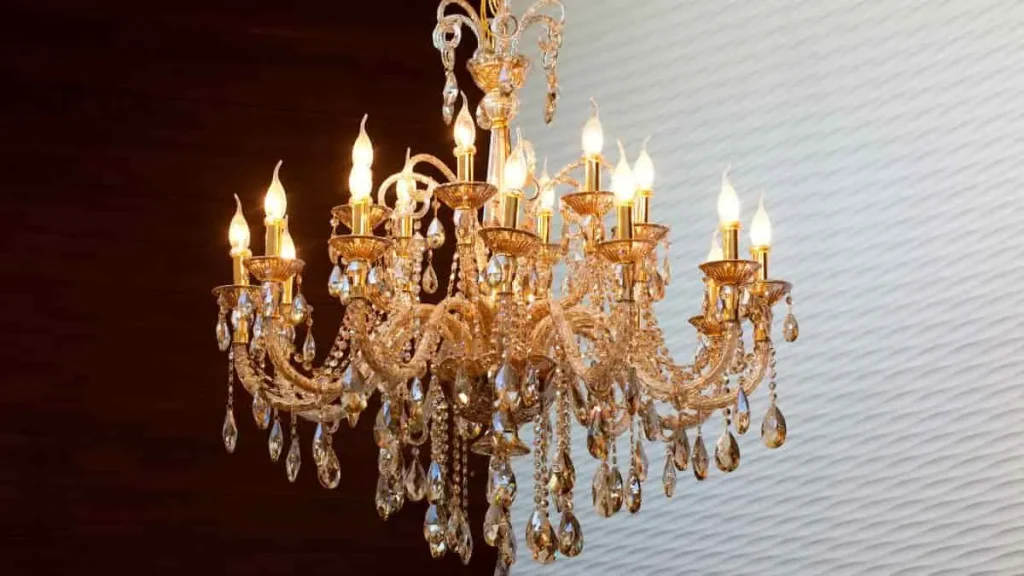
Choosing the Right Chandelier for Your Kitchen
Chandeliers are a statement piece that can add elegance and drama to your kitchen. When choosing a chandelier, consider the size of your kitchen and the height of your ceiling. A large chandelier in a small kitchen might overwhelm the space, while a small chandelier in a large kitchen could get lost.
Styles of Chandeliers
Chandeliers come in many styles, from classic and ornate to modern and minimalist. Crystal chandeliers can add a touch of glamour, while wrought iron or wooden chandeliers can bring a rustic or industrial vibe.
Placement Tips for Chandeliers
The chandelier should be centered over a kitchen island or dining table for the best effect. Ensure it hangs at a height that provides ample light without obstructing the view or causing glare.
5. Track Lighting

What is Track Lighting?
Track lighting consists of a series of lights attached to a track, which can be mounted on the ceiling or walls. The lights can be adjusted to focus on different areas, making it a flexible and versatile lighting option.
Advantages of Track Lighting
Track lighting is perfect for kitchens because it can be directed to illuminate specific areas, such as the stove, sink, or countertops. It’s also easy to install and can be customized with different light fixtures to match your kitchen decor.
Best Uses for Track Lighting in the Kitchen
Use track lighting to highlight key areas in your kitchen, such as the cooking zone, prep areas, or decorative features like artwork or open shelving. It’s also a great option for providing general ambient light.
6. Flush Mount Lighting
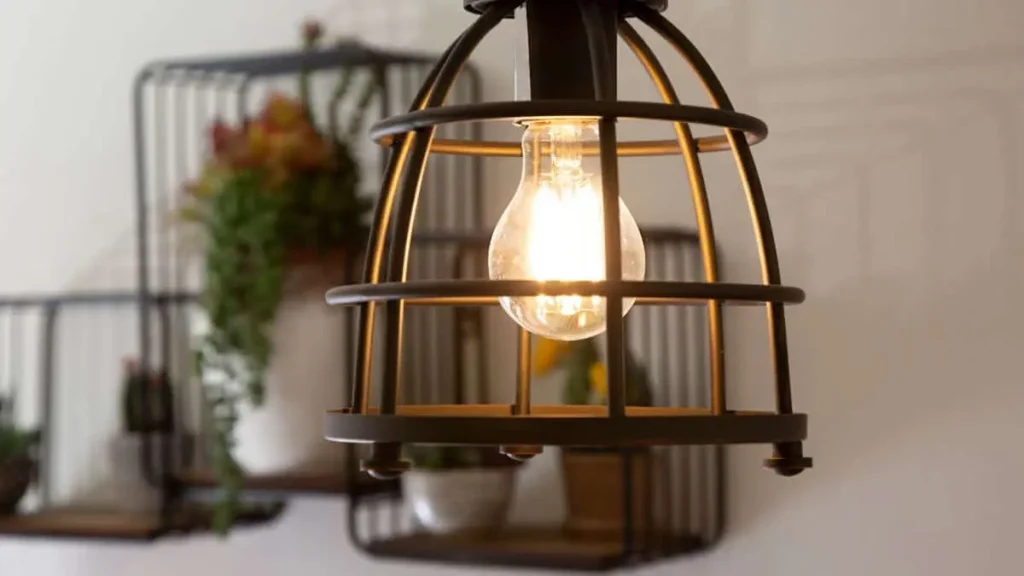
Types of Flush Mount Lighting
Flush mount lights are fixtures that sit directly against the ceiling, making them ideal for kitchens with low ceilings. They come in a variety of styles and sizes, from simple and modern to decorative and ornate.
Benefits of Flush Mount Lighting
Flush mount lights provide ample overhead lighting without taking up too much space. They are perfect for general illumination and can be used in combination with other types of lighting for a layered effect.
Where to Install Flush Mount Lights
Install flush mount lights in areas where you need bright, general lighting, such as the center of the kitchen or over the dining area. They are also great for smaller kitchens where space is at a premium.
Read Also: How to Achieve a Stunning Kitchen Makeover on a Budget
7. LED Strip Lighting

Benefits of LED Strip Lighting
LED strip lighting is flexible, energy-efficient, and easy to install, making it a popular choice for modern kitchens. It provides a continuous line of light that is perfect for under cabinets, along toe kicks, or inside cabinets.
How to Install LED Strip Lighting
Installing LED strip lighting is simple. Measure the area where you want to install the strips, cut the strips to size, and adhere them with the adhesive backing. Connect the strips to a power source, and you’re done!
Creative Uses for LED Strip Lighting in the Kitchen
LED strip lights can be used to add a decorative touch to your kitchen. Use them under the cabinets to illuminate countertops, along the toe kicks for a floating effect, or inside glass-front cabinets to highlight your favorite dishes.
8. Cabinet Interior Lighting
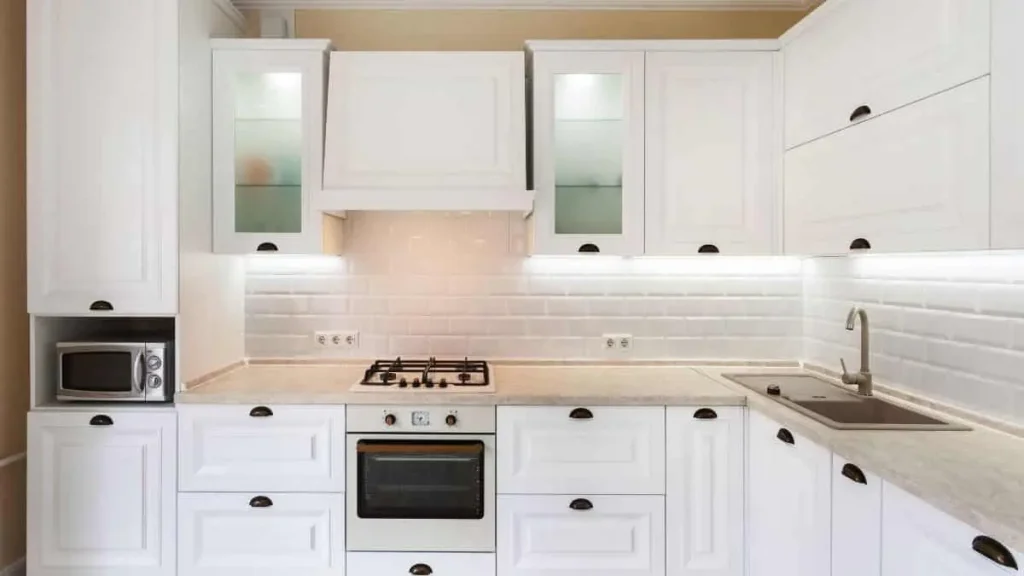
Why Use Cabinet Interior Lighting?
Cabinet interior lighting adds a touch of luxury to your kitchen while making it easier to find items inside your cabinets. It’s especially useful for glass-front cabinets or open shelving.
Types of Cabinet Interior Lighting
There are several options for cabinet interior lighting, including puck lights, LED strips, and mini spotlights. Choose the type that best suits your needs and cabinet style.
Installation Tips for Cabinet Interior Lighting
For the best results, hide the wiring and choose lights that match the interior of your cabinets. LED lights are a great choice due to their low heat output and energy efficiency.
9. Island Lighting
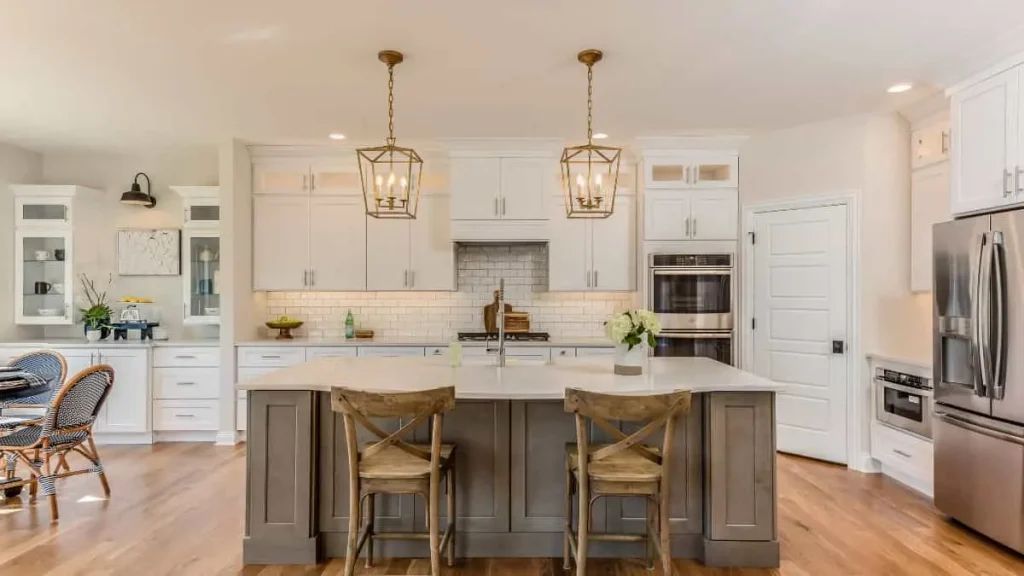
Importance of Island Lighting
The kitchen island is often the focal point of the kitchen, serving as a prep area, dining space, and social hub. Proper lighting is essential to make the most of this versatile space.
Best Island Lighting Options
Pendant lights and chandeliers are popular choices for island lighting. They provide focused light while adding a decorative element to your kitchen. For a modern look, consider linear suspension lights or a series of small pendants.
Installation Tips for Island Lighting
Hang island lighting at a height that provides ample light without obstructing the view. A general rule of thumb is to hang pendant lights about 30-36 inches above the island. Ensure the lights are evenly spaced and aligned with the island for a balanced look.
10. Skylights and Natural Lighting

Benefits of Natural Lighting
Natural lighting can make your kitchen feel larger, brighter, and more inviting. It’s also a great way to save on energy costs by reducing the need for artificial lighting during the day.
How to Maximize Natural Light in Your Kitchen
To maximize natural light, consider installing larger windows, glass doors, or skylights. Keep window treatments light and airy to allow as much light in as possible. Reflective surfaces, such as glass tiles or shiny countertops, can also help bounce light around the room.
Installing Skylights
Skylights are a fantastic way to bring natural light into your kitchen. They can be installed on flat or sloped ceilings and come in various sizes and styles. When installing skylights, ensure they are properly sealed to prevent leaks and drafts.
FAQs
What is the best lighting for a small kitchen?
The best lighting for a small kitchen includes under-cabinet lighting and recessed lighting. These options provide ample light without taking up valuable space or overwhelming the room.
How can I make my kitchen lighting more energy-efficient?
To make your kitchen lighting more energy-efficient, opt for LED bulbs, which use less energy and last longer than traditional bulbs. Additionally, consider installing dimmer switches to adjust the light levels based on your needs.
What is the average cost of installing new kitchen lighting?
The cost of installing new kitchen lighting can vary widely based on the type and number of fixtures, as well as the complexity of the installation. On average, homeowners can expect to spend between $500 and $2,500.
How do I choose the right color temperature for kitchen lighting?
The right color temperature for kitchen lighting depends on the atmosphere you want to create. For a warm, cozy feel, opt for bulbs with a color temperature of 2700K to 3000K. For a brighter, more energizing space, choose bulbs with a color temperature of 3500K to 4100K.
Can I mix different types of lighting in my kitchen?
Yes, mixing different types of lighting in your kitchen is a great way to create a layered and versatile lighting scheme. Combine task lighting, ambient lighting, and accent lighting to achieve the perfect balance.
Conclusion
Lighting is a crucial element in any kitchen design, affecting both functionality and aesthetics. By choosing the right combination of lighting options, you can create a bright, welcoming, and efficient space that meets all your needs.
Whether you prefer the sleek look of recessed lighting, the elegance of a chandelier, or the versatility of track lighting, there’s a perfect option for every kitchen.



